
Hearing loss is a common health concern affecting millions of people worldwide with nearly 430 million individuals experiencing hearing loss requiring rehabilitation. Whether it's due to aging, prolonged exposure to loud noises, or other factors, early detection and intervention are crucial for managing hearing impairment effectively for individuals of any age. Two primary methods for assessing hearing health are comprehensive hearing tests and hearing screenings. While both serve important purposes, understanding the differences between them, their results, implications, and limitations is vital for individuals seeking to understand their hearing health.
Why Perform a Comprehensive Hearing Test
A comprehensive hearing test, also known as a diagnostic audiologic evaluation, is a thorough assessment conducted by a licensed hearing care professional. It involves a series of tests designed to evaluate different aspects of hearing. A diagnostic evaluation may include:
Pure-tone audiometry: This test measures the softest sounds a person can hear at different frequencies, typically ranging from low to high pitches.
Speech audiometry: Evaluates the ability to hear and understand speech at various volumes.
Tympanometry: Assesses the health and function of the middle ear by measuring how how effectively sound is transmitted through the middle ear.
Otoacoustic emissions (OAEs): Measures the sounds emitted by the inner ear in response to sound stimuli, providing information about the health of the cochlea.
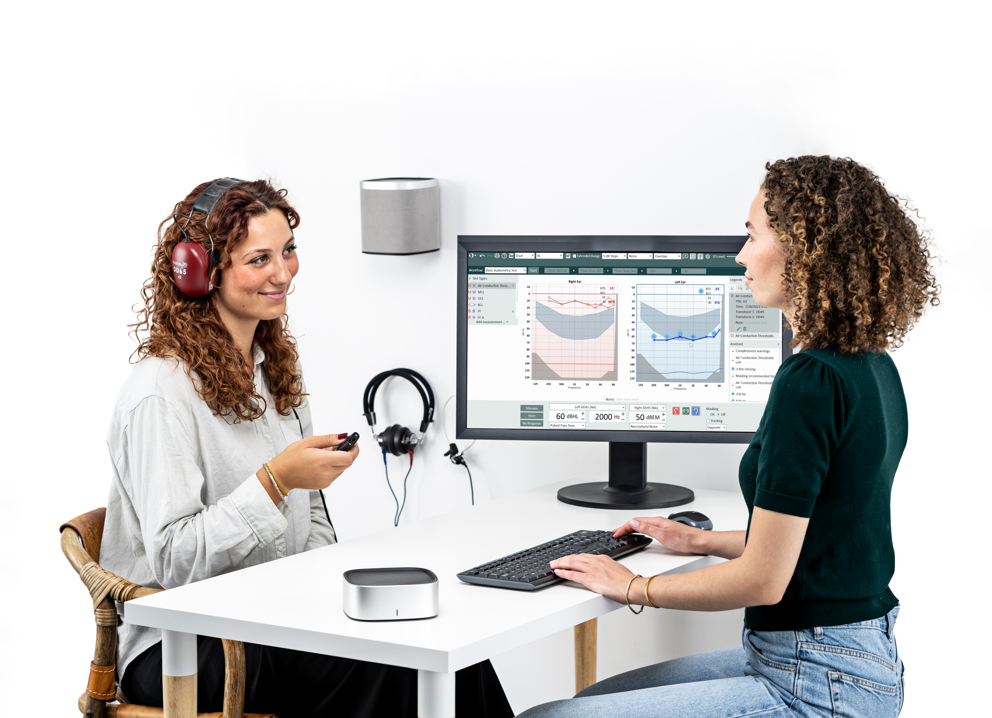
These tests provide valuable insights into the type, degree, and configuration of hearing loss, helping audiologists tailor treatment plans, including hearing aids or cochlear implants, if necessary. Comprehensive hearing tests are recommended for individuals experiencing symptoms of hearing loss or those with known risk factors.
The results of a comprehensive hearing test provide a comprehensive overview of an individual's hearing health, including specific details about the type and severity of any hearing loss. This information guides not only treatment plans, but possible referrals to other providers like ear, nose, and throat (ENT) doctors.
On the other hand, a hearing screening is a brief evaluation aimed at identifying individuals who may have hearing loss. It is often conducted in non-clinical settings such as schools, workplaces, or community health fairs. Unlike comprehensive tests, screenings are not intended to diagnose hearing loss definitively but rather to flag potential issues that warrant further evaluation.
Hearing screenings typically involve simple tests like pure-tone screening, where individuals respond to beeps at different frequencies, or speech screenings, where they repeat words spoken at various volumes. While screenings can identify individuals at risk of hearing loss, they don’t provide detailed information about the type or severity of impairment.
The results of a hearing screening serve as an initial indicator of potential hearing issues, prompting further evaluation by a licensed audiologist. While screenings are valuable for raising awareness and identifying individuals who may benefit from further assessment, they have limitations in terms of diagnostic accuracy and the depth of information they provide.
Free Guide
Driving Clinical Excellence with Real-time Quality Assessment & Audiometric Nudging
Understand the benefits and value of real-time quality assessment and nudging in hearing care. This guide will give you the tools and knowledge to implement friendly notification alerts for audiologists to ensure consistent, high-quality hearing examinations, accurate diagnoses, appropriate solutions, and proper fittings.
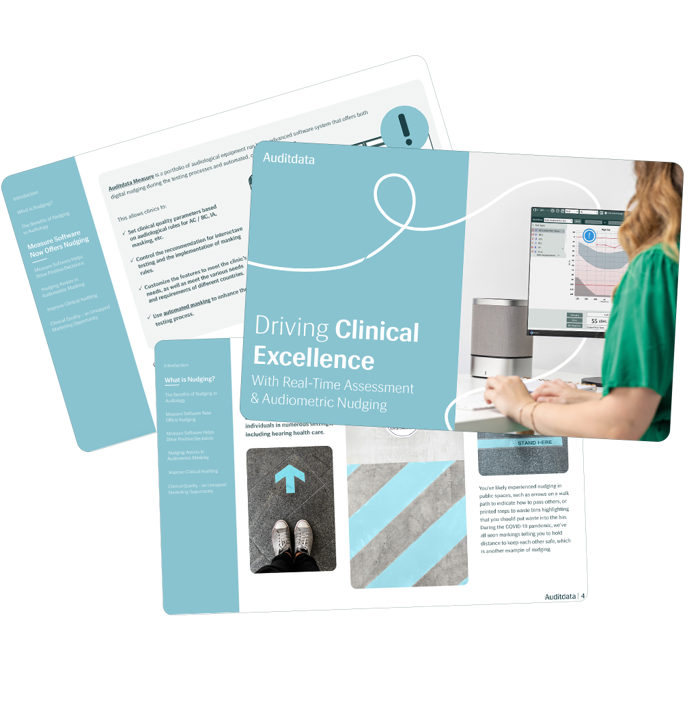
The Purpose of a Hearing Screening vs. Hearing Test
The purpose of a hearing screening differs from that of a comprehensive hearing test. A hearing screening aims to quickly identify individuals who may have hearing loss or be at risk of developing it. Typically conducted in non-clinical settings, such as schools or community centers, screenings employ simple tests to flag potential issues that warrant further evaluation.
In contrast, the purpose of a comprehensive hearing test, also known as a diagnostic audiologic evaluation, is to provide a thorough assessment of an individual's hearing health. Conducted by a licensed audiologist, comprehensive tests involve a series of detailed tests to diagnose the type, severity, and configuration of hearing loss accurately. The results of these tests guide personalized treatment plans, including the recommendation of hearing aids or other interventions, if necessary. While both screenings and comprehensive tests serve important roles in hearing health care, their purposes differ in terms of the depth of evaluation and the level of diagnostic detail they provide.
Degrees of Hearing Loss Explained
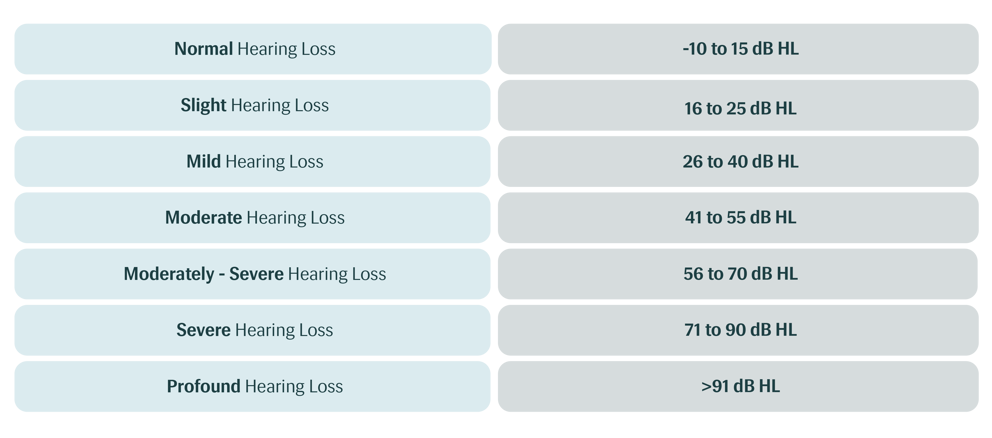
While a screening provides a simple “yes” or “no” result regarding whether an individual needs further assessment, a comprehensive diagnostic evaluation provides specific information about an individual’s type and severity of hearing loss. The severity of a hearing loss is most commonly referred to as the degree of hearing loss. This information is helpful during counseling to describe a hearing loss, but it can also provide information regarding treatment options.
The degree of hearing loss is determined, most often, by pure tone audiometry. During pure tone audiometry, a hearing healthcare provider presents a patient with tones at varying pitches and levels of intensity. Through this testing, thresholds at each pitch are obtained. These thresholds are the lowest level that a given individual responds to a certain pitch or frequency. It is these thresholds that determine the degree of hearing loss. This degree of loss can change at each frequency tested as it is determined by the intensity level of the threshold. For example, an individual may have a mild hearing loss in the low frequencies that slopes to a moderately-severe hearing loss in the high frequencies. Degrees of hearing loss and their corresponding intensity levels are outlined below.
The Most Accurate Hearing Test
The most accurate hearing test is one conducted by a licensed and trained professional. By nature, a comprehensive diagnostic evaluation is going to be more accurate than a hearing screening as it provides far more information regarding an individual’s hearing status. Additionally, hearing tests must be conducted in a quiet environment, ideally a soundproof booth.
By utilizing state-of-the-art equipment, like the Measure audiometer, and techniques, audiologists can precisely measure the softest sounds a person can hear across different frequencies, evaluate their ability to understand speech in various environments, assess the health and function of the middle ear, and examine the integrity of the cochlea. These comprehensive tests provide detailed insights into the type, degree, and configuration of any hearing loss, allowing audiologists to tailor treatment plans accurately. While other screening methods may offer quick assessments, a diagnostic audiologic evaluation remains the gold standard for accurately diagnosing hearing loss and guiding appropriate interventions.
Auditdata Measure
Accurate, Assured Hearing Assessments and Fittings
With Auditdata Measure, hearing care professionals and patients can trust their results and make qualified decisions in their patients’ hearing care journeys. Stable and secure software and hardware give confidence in clinical quality, so they can deliver care back to patients.
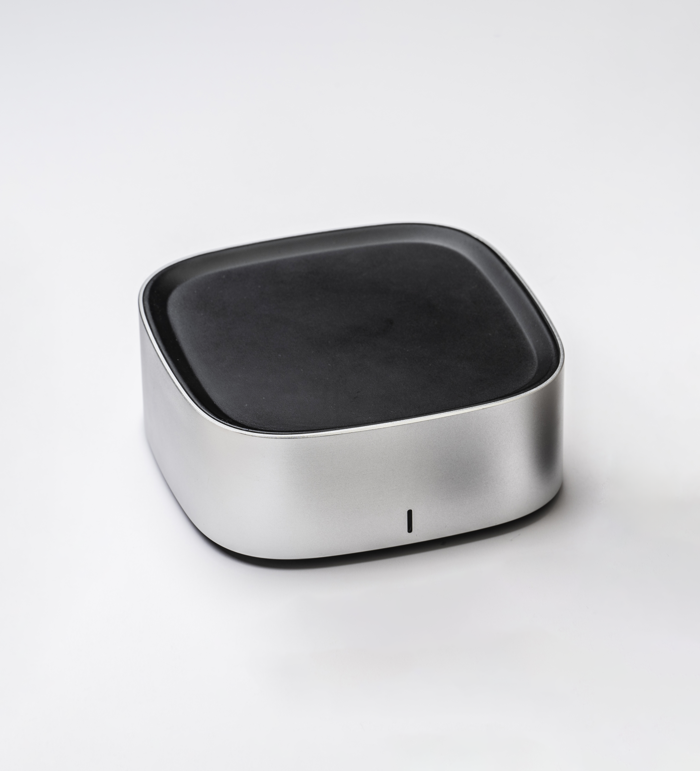
The Role of Audiologists in Hearing Assessments
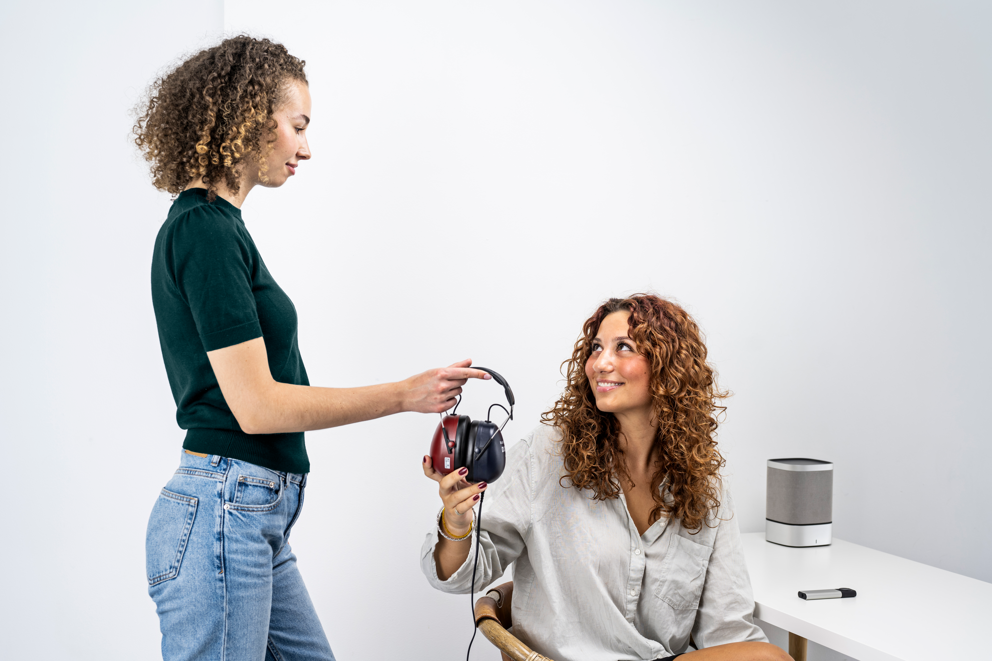
Audiologists play a crucial role in conducting thorough and accurate hearing assessments. With their specialized training and expertise in the field of audiology, audiologists are uniquely qualified to evaluate various aspects of hearing health.
They conduct comprehensive diagnostic audiological evaluations, which involve a series of tests to assess hearing sensitivity, speech understanding, middle ear function, and cochlear health. Audiologists use sophisticated equipment and techniques to ensure precise measurements and reliable results. Beyond administering tests, audiologists interpret the findings in the context of an individual's overall health, communication needs, and lifestyle factors. They provide personalized recommendations for management, which may include hearing aids, assistive listening devices, auditory rehabilitation, or referral for medical intervention if necessary.
Moreover, audiologists play a vital role in educating individuals about hearing conservation, promoting awareness of hearing health, and advocating for access to hearing care services.
Steps in a Comprehensive Hearing Assessment
Initial Consultation
Providers will first take a history from the patient. This involves asking questions about a variety of things like symptoms or family history of hearing loss. A hearing health care provider may ask if a patient has trouble hearing in noise, dizziness, tinnitus, or ringing in the ears, ear pain or fullness, and much more. This is to guide testing and possible treatment options if a hearing loss is identified.
Physical Examination
To start the testing portion of the appointment, otoscopy will be performed. Otoscopy is when a provider takes a look into each ear. This is to identify issues like excessive ear wax or even fluid behind the ear drum. To further assess the status of the middle ear, the provider will then perform tympanometry. Tympanometry is performed with a small probe in the ear. This probe sends air pressure into the ear and is able to determine the status of the middle ear. This is aid in diagnosis and also helps to determine the type of hearing loss an individual is experiencing.
Pure Tone and Speech Testing
Pure tone audiometry is often the next step. During this assessment, as described above, tones are presented at varying frequencies and intensity levels. This helps to determine the severity of hearing loss. Pure tone audiometry can also identify the type of hearing loss by testing and comparing air and bone conduction thresholds. Masking can be employed to separate responses from each ear.
Speech testing involves the presentation of words or phrases to help a hearing healthcare provider ascertain an individual’s ability to understand speech. For example, speech recognition scores involving the presentation of words at a comfortable loudness level. Individuals are asked to repeat these words and a percent correct score is obtained. Speech testing can also be conducted in background noise.
Understanding the Results
-
The accuracy of hearing tests depends on various factors, including the type of test, the qualifications of the individual administering the test, and the conditions under which it is conducted. Comprehensive diagnostic audiologic evaluations conducted by licensed audiologists are considered the gold standard for accuracy in assessing hearing health.
These evaluations involve a battery of tests that measure hearing sensitivity, speech understanding, middle ear function, and cochlear health, providing detailed insights into the type, degree, and configuration of any hearing loss. When administered by skilled professionals using calibrated equipment in controlled environments, these tests yield highly accurate results. However, the accuracy of screening tests or self-administered online assessments may vary, as they are designed for preliminary identification rather than definitive diagnosis.
Additionally, factors such as background noise, patient cooperation, and equipment calibration can influence the accuracy of results. Overall, while comprehensive hearing tests conducted by audiologists are highly accurate, it's essential to consider the limitations and conditions under which other types of tests are administered.
-
Newborn hearing screenings are highly accurate in detecting hearing issues in infants shortly after birth. These screenings typically involve non-invasive tests that measure the baby's response to sound. The most common method used is the automated auditory brainstem response (AABR) test, which measures the electrical activity in the auditory nerve in response to sound. Another method is the otoacoustic emissions (OAE) test, which measures the sounds emitted by the inner ear in response to sound stimulation. Both tests have proven to be highly reliable in identifying hearing loss in newborns, with a high degree of accuracy. Early detection through these screenings allows for timely intervention and support, which can significantly improve the child's language and cognitive development.
These tests, however, are screenings and thus, the results need to be validated by comprehensive assessments like an auditory brainstem response test which can determine the type and degree of hearing loss, if one is indeed present. “False positives” and “false negatives” are entirely possible with this type of assessment. A false positive describes a result that indicates a hearing loss, when there is not one. A baby may have completely normally hearing, but fail a newborn hearing screening due to movement, noise in the environment, or fluid in the ear that has not yet cleared from birth. A “fasle negative” is the opposite result – a passing hearing screening when a hearing impairment is indeed present. While these results occur less often, they are possible. If you notice your child not responding to sound or if you have concerns regarding their hearing, it’s important to visit your local hearing healthcare professional regardless of these results.
-
Online hearing tests should be considered a hearing screening in that they may identify some individuals with hearing loss, but due to wide variability in these tests, results may not be completely accurate. When a hearing health care provider performs a hearing test, either a comprehensive assessment or a hearing screening, they are ideally utilizing a calibrated headset designed for hearing testing. Online hearing tests rely on the integrity of the users headphones or speakers which may not be calibrated to produce the exact output the test requires. Additionally, the most accurate hearing assessments are performed in soundproof booths to eliminate the influence of environmental noise. Online hearing tests are designed to be conducted in a users home and thus, can not control for the effects of outside noise.
These types of tests, however, have advanced in recent years. A study conducted in 2022 noted the accuracy of a specific smartphone based hearing test that, while automated and not performed by a hearing healthcare professional, employed verification procedures like an ambient noise monitoring algorithm and a graphical user interface. The study found that the thresholds obtained by this app and those obtained by clinical audiometry did not differ significantly.
Auditdata Measure
Bridge the Gap Between Detection and Treatment With Auditdata Measure
Empowering people living with hearing impairment begins with efficient and accurate testing and fitting. Auditdata Measure is a suite of audiological equipment that connects to a modular, PC-based clinical measurement software system.
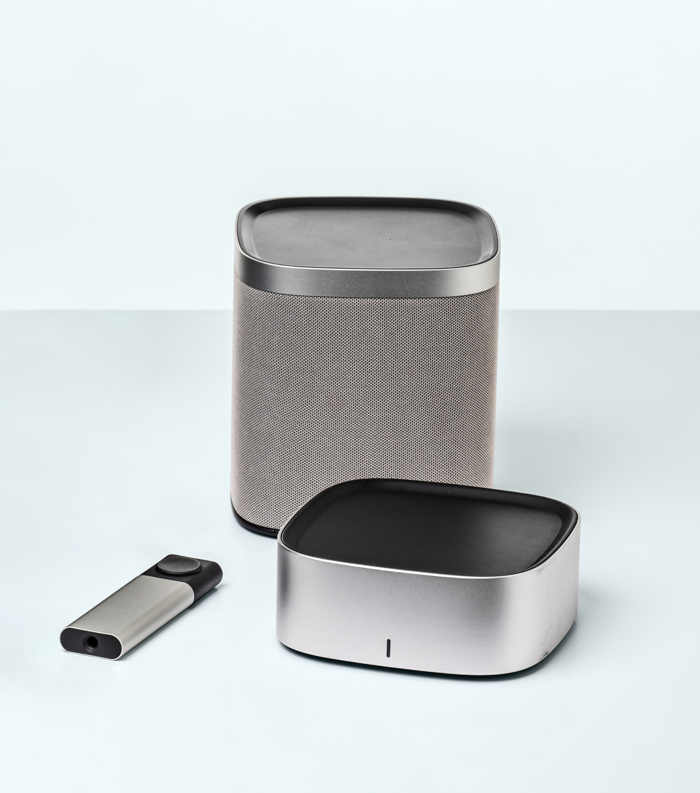
Other Blogs You Might Enjoy:

What Do Your Hearing Aid Users Need?
If someone suspects they have hearing loss, they should see an audiologist for a hearing screening to determine whether they need hearing aids. But then what happens? This blog explains how to give your patients what they need for success with their hearing aids, such as setting proper expectations, providing care and maintenance tips for the devices, offering valuable tips before they buy, and providing ongoing aftercare.
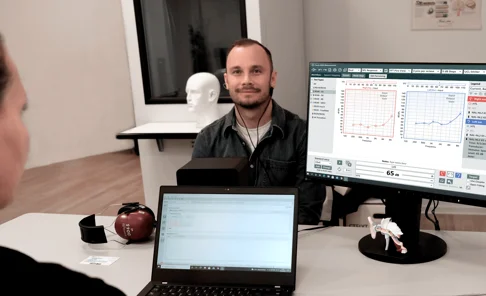
Are Real Ear Measurements Necessary?
Real Ear Measurements (REM) – also called Probe Microphone Measurements (PMM) – are considered the gold standard in hearing aid fitting and verification, allowing audiologists to determine whether a hearing aid user is receiving the precise level of amplification needed at every frequency to maximize their hearing. This blog explains how REM can improve customers’ hearing, as well as drive better business outcomes and serve as a key differentiator for hearing clinics.

Common Audiometry and Hearing Loss Myths
Hearing loss is a prevalent condition that can significantly impact an individual's quality of life, yet misconceptions surrounding audiometry tests and hearing loss persist. This article aims to debunk common myths, providing clarity on the audiometric process and the nature of hearing impairment. By dispelling these misconceptions, we can foster a more informed and understanding approach to hearing health.
Don't Miss Out On the Latest Insights On Audiology
Sign up today to receive exciting updates, tips, and the latest newsletters from Auditdata.





